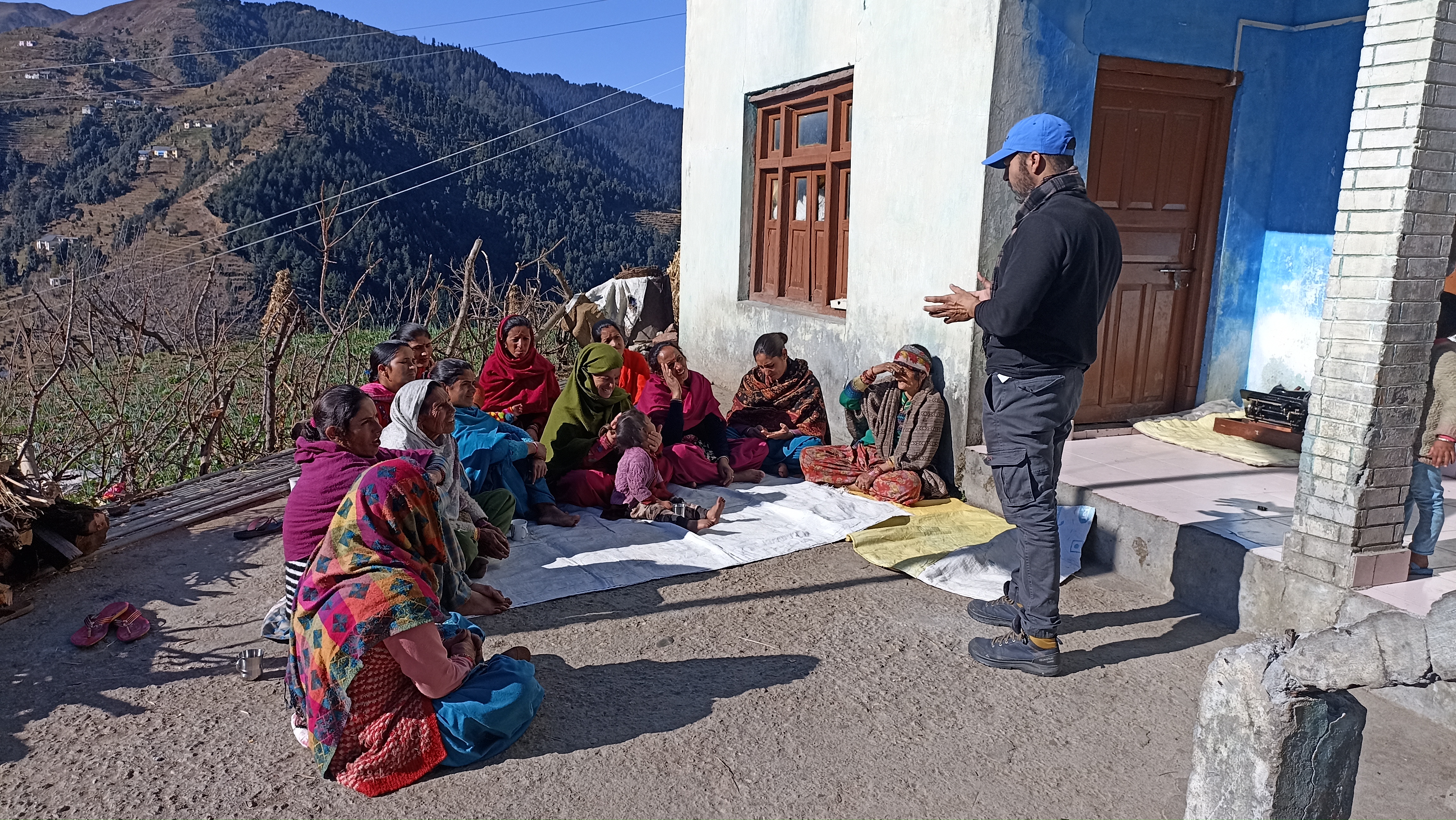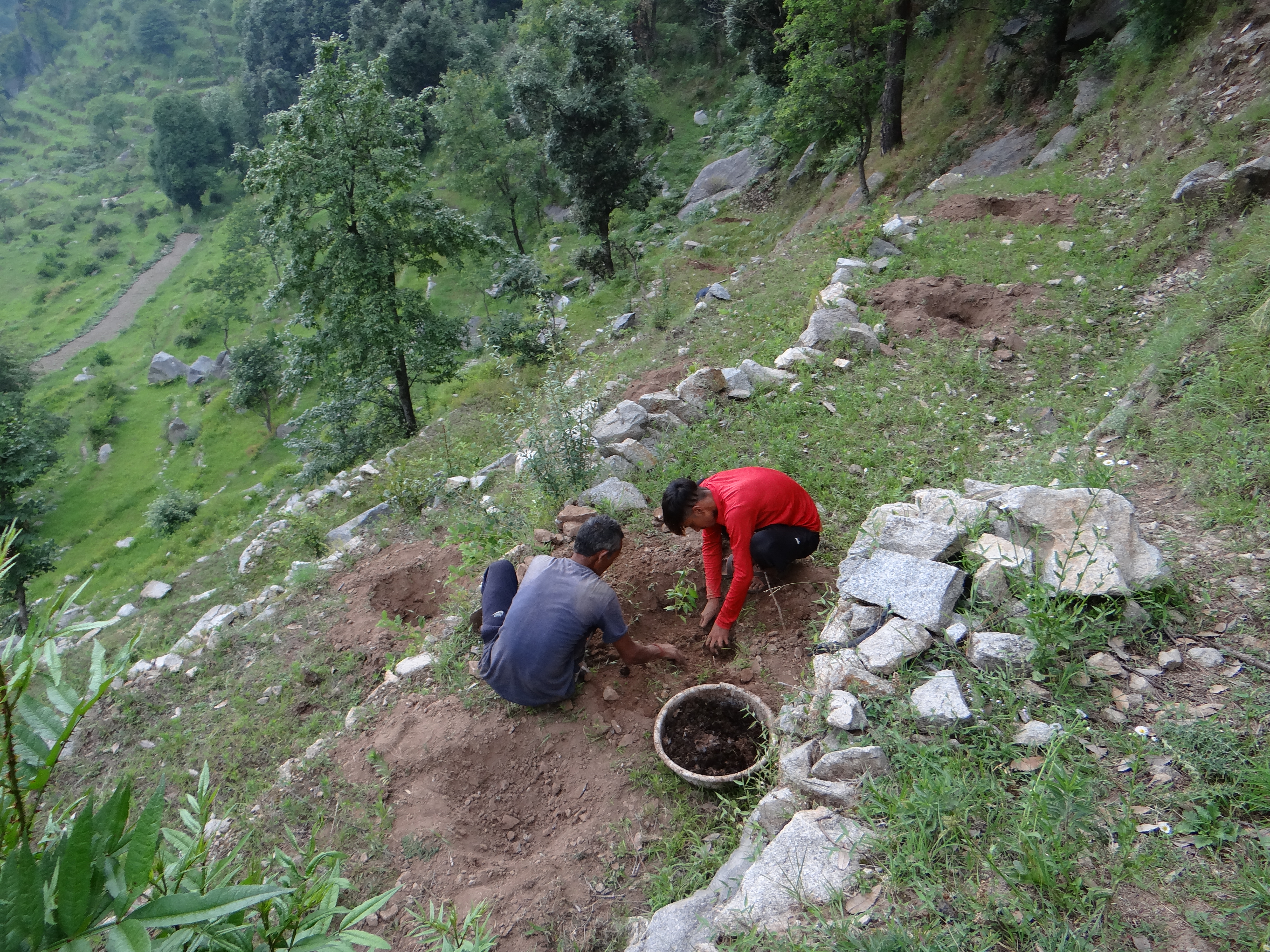Chamba, of Sacred Langurs.
First published in Sanctuary Cub,
Vol. 42
No. 3,
March 2022
Text and photographs by Vishal Ahuja
This beautiful valley in Himachal Pradesh harbours rich wildlife including an endangered species of langur that sparked my journey in conservation. Less than 500 mature individuals are now left in the wild.
A Rare Langur
Ever since I was a young boy, I have trekked across the beautiful and treacherous terrain of Chamba, my home, a small town in Himachal Pradesh. Even then, many questions plagued me – “Why are these surrounding mountains barren?”; “Why do these forests catch fire every year?”; or “Whose job is it to plant trees?”.
This scenic valley harbours several rare and threatened wildlife species including one of the most endangered species of langur in India – the Himalayan grey langur or the Chamba sacred langur Semnopithecus ajax. This animal has brought me great joy, driven my passion and thereafter my career in conservation. Sadly, less than 500 mature individuals of this majestic primate are left in the wild.
The Chamba sacred langurs are primarily found in broad-leaf and pine forests. They directly contribute to regenerating tropical forests and maintaining a healthy ecosystem by dispersing seeds. Their diet is mostly frugivorous (fruits), and their relatively large sizes enable them to disperse small and large seeds over long distances. Langurs are a key link to keeping the forests alive and growing.
I have spent over a decade of my life studying the Chamba sacred langurs and their behaviour and dietary preferences. The experiences and knowledge that I have gained helped inform my rewilding project, which is aimed at restoring the degraded forests around the Kalatop-Khajjiar Wildlife Sanctuary to enable wild animals such as langurs, people and nature thrive together.
_1646150777.jpg)
Female Himalayan grey langur with child.
A Threatened Landscape
The forests in and around the Kalatop-Khajjiar Wildlife Sanctuary have undergone various stages of modification, fragmentation and degradation due to human activities such as farming and road construction. Approximately 1,000 sq. km. of forest land is now predominantly terrace-agriculture. This has led to an increase in human-animal encounters within the region.
I have learnt that both humans and animals try to keep their distance from each other, but end up crossing paths despite their best efforts. When animals need food – they do not differentiate fruit trees in the forest to those in farms. To them, all fruits are delicious! Due to habitat loss and decrease in food stock, wild animals have been feeding on farmer’s crops. Macaques have started snatching food from people and are now more emboldened. There have been a few cases where human-black bear encounters have turned fatal for the former.
The otherwise tolerant farming community is also beginning to lose their patience, a natural reaction when wild animals destroy the fruit of their year-long toil and labour. There is an urgent need to save wild animals as there will be no forests without them. However, we also should find ways to protect farmers’ crops.

Vishal with farmers of Kakela village, Chamba.
The Way Forward
Mitigating the increasing negative human-wildlife interactions and fostering coexistence in the landscape will require support and participation from all. I have been working with the Forest Department of Chamba along with local farmers and youth groups for rewilding the degraded forests in the valley.
Many village panchayats in the valley have participated in rewilding drives. With the support of locals and the Forest Department, 300 saplings of native wild fruiting trees have been planted in the valley over the past monsoon season.
Rewilding abandoned and degraded terrace lands by planting native wild flora can, in the long-term, help to minimise pressure on farm crops. Such projects require a ready supply of healthy saplings. And therefore, using my field knowledge of over 247 species of native plants that are used by animals, I have started a tiny nursery in my backyard. This nursery is used to germinate seeds and grow saplings of wild native flora before they are shared free of cost with farmers or are transplanted to suitable sites during pre-monsoon and monsoon seasons. Setting up and maintaining the nursery on my own has been challenging, but it is also deeply rewarding to know that my saplings will mature into food-bearing trees for the wildlife in the region.

Farmers planting saplings on their abandoned terraced farms.
TOP TIPS
~ Just planting trees is not a solution. It is vital to plant the right types of trees at the right places!
~ Rewilding forests requires collecting seeds of native plants and trees and growing them in a nursery.
~ Involving local communities in rewilding projects helps them understand the importance of conservation.
Vishal Ahuja is a Project Assistant with the Himalayan Grey Langur Project of the Wildlife Information Liaison Development Society, Coimbatore. He is a Project Leader of Sanctuary’s Mud on Boots project.


_1646150777.jpg)
